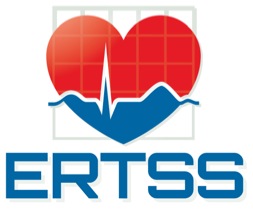
What's New
Click On A Title Below To View Details
ACLS CE Credit
| ACLS Training Centers: |
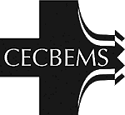
BCLS For Healthcare Providers 2010 Release
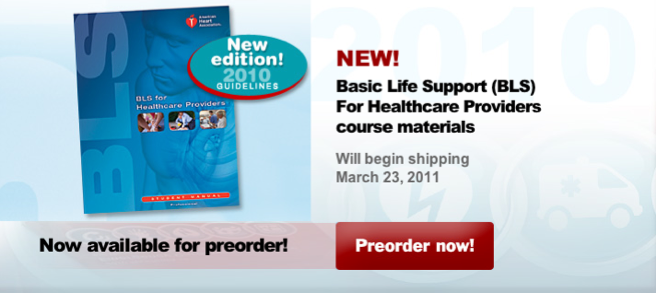
AHA Instructor Updates
The Instructor Update for the 2010 Guidelines will be available on the AHA Instructor Network as a Video stream. You will be notified via email from the Instructor Network when the Webcast is available. Once you complete this process, you will be able to print your Update Certificate. Updates will be available for BLS, ACLS and PALS instructors. For more information, please visit the AHA 2010 Guidelines Schedule section of our website.
AHA 2010 Guideline Release
The AHA will release the 2010 Guidelines on October 18th. The Guidelines will be available on the AHA Instructor Network.
Bethebeat.org
This is a School outreach program for students and teachers.
www.bethebeat.org
www.bethebeat.org
National CPR & AED Awareness Week
June 1 - 7 is National CPR & AED Awareness week. AHA has a goal to train 1 million people in CPR during that week.
Here is a website you can view.
www.americanheart.org/CPR&AEDweek
Here is a website you can view.
www.americanheart.org/CPR&AEDweek
Heartsaver Bloodborne Pathogens
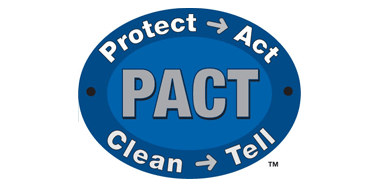
The Heartsaver Bloodborne Pathogens Course is designed to meet Occupational Safety and Health Administration (OSHA) requirements for bloodborne pathogens training when paired with site-specific instruction. The American Heart Association offers both an instructor-led classroom bloodborne pathogens course (available in both English and Spanish) as well as a flexible online course (available in English only). Both are designed for workplace personnel in settings such as: | | | | | | ||||
| | • Industry and manufacturing
• Fortune 1500 companies
• Occupational health
• Property management
• Hospitality
•Health and fitness staff | | • Childcare workers
• School personnel
• Maintenance workers
• Tattoo artists
• Security
• State corrections facilities | | |||||
| | | | | | |||||
| Features & Benefits | | Course Covers | | Purchase Options |
| • AHA is now the one- stop shop for all first aid, CPR, AED and bloodborne pathogens training needs • PACT acronym and slogan help students learn and retain training • Can be completed in approximately one hour • Can be taken for first-time or renewal bloodborne pathogens training | | How to: • | Protect yourself from exposure | To purchase the Heartsaver Bloodborne Pathogens, visit our |
Self Study STEMI Program with CEU's
This self-study manual contains information on out-of-hospital and emergency-department systems of care for ST-segment elevation myocardial infarction (STEMI), STEMI identification and treatment, and acute coronary syndromes (ACS) pathophysiology. It is intended to enable out-of-hospital and emergency-department healthcare personnel to rapidly assess, diagnose, and treat STEMI patients with the major goals of door-to-needle time within 30 minutes for patients without contraindications and door-to-balloon time within 90 minutes. The appendix includes 12-lead ECGs with annotations for self-study. Approximately 80 pages, the manual is a continuing-education-accredited activity.

Order your STEMI manual from our Online Book Store

Order your STEMI manual from our Online Book Store
National CPR and AED Awareness Week
June 1-7, 2008, is the FIRST National CPR & AED Awareness Week! The American Heart Association, the American Red Cross and the National Safety Council collaborated to have this week officially designated by Congress.
During this week, we will encourage the public to learn lifesaving skills like CPR and how to use an AED, as well as increase awareness of the need for public access to AEDs. There will be many activities during the week that we hope you, as part of our Training Network, will help us promote. Here are just a few:
- Web page
The new National CPR & AED Awareness Week consumer Web site is now live! Direct your customers there to get the latest news on the week.

- Forward-to-a-Friend Email
On June 2, you'll receive a unique "forward to a friend" email that will look like this:
Please forward this email to your family and friends and help us spread the word!
- YouTube Video
Check out our new YouTube video — the second in our series.
- Harris Interactive Poll Survey Results
During CPR & AED Awareness Week, we'll be releasing to media the results of a Harris Interactive Poll on attitudes and awareness about CPR and AED use.
- National CPR & AED Awareness Week Posters/Stickers
We have created posters and stickers for the week — hopefully you'll see some in your community. Your Training Center may be able to get some of these items from an ECC Training Account Representative, while supplies last.
AHA Press Release For "Hands Only CPR".
FOR RELEASE
3 p.m. CT/4 p.m. ET, Monday
March 31, 2008
CONTACT: For journal copies only,
please call: (214) 706-1396
For other information, call:
Maggie Francis: (214) 706-1382
Kate Lino: (214) 706-1325
Julie Del Barto (broadcast): (214) 706-1330
American Heart Association scientific advisory report
Hands-Only CPR simplifies saving lives for bystanders
New statement from the American Heart Association puts life-saving skills in your hands
DALLAS, April 1 — Chest compressions alone, or Hands-Only Cardiopulmonary Resuscitation (CPR), can save lives and can be used to help an adult who suddenly collapses, according to a new American Heart Association scientific statement.
The statement, from the association’s Emergency Cardiovascular Care (ECC) committee, is published in Circulation: Journal of the American Heart Association.
Hands-Only CPR is a potentially lifesaving option to be used by people not trained in conventional CPR or those who are unsure of their ability to give the combination of chest compressions and mouth-to-mouth rescue breathing it requires.
“Bystanders who witness the sudden collapse of an adult should immediately call 9-1-1 and start what we call Hands-Only CPR. This involves providing high-quality chest compressions by pushing hard and fast in the middle of the victim’s chest, without stopping until emergency medical services (EMS) responders arrive,” said Michael Sayre, M.D., chair of the statement writing committee and associate professor in the Ohio State University Department of Emergency Medicine in Columbus.
About 310,000 adults in the United States die each year from sudden cardiac arrest occurring outside the hospital setting or in the emergency department. Without immediate, effective CPR from a bystander, a person’s chance of surviving sudden cardiac arrest decreases 7 percent to 10 percent per minute. Unfortunately, on average, less than one-third of out-of-hospital cardiac arrest victims receive bystander CPR, which can double or triple a person’s chance of surviving cardiac arrest.
By using Hands-Only CPR, bystanders can still act to improve the odds of survival, whether they are trained in conventional CPR or not, Sayre said.
“Many times people nearby don’t help because they’re afraid that they will hurt the victim and aren’t confident in what they’re doing,” he said. “We want people to know that they can help many victims, just by calling 9-1-1 and doing chest compressions. Don’t be afraid to try it. We are sure many lives will be saved if the public does Hands-Only CPR for adult victims of sudden cardiac arrest.”
The new recommendation for Hands-Only CPR for adults who suddenly collapse is an update to the 2005 American Heart Association Guidelines for CPR and ECC, which previously recommended that lay rescuers use compression-only CPR only if they were unable or unwilling to provide rescue breaths. The update puts Hands-Only CPR on par with conventional CPR when used for an adult who has suddenly collapsed. This change was supported by evidence published from three separate large studies in 2007, each describing the outcomes of hundreds of instances of bystanders performing CPR on cardiac arrest victims. None of those studies demonstrated a negative impact on survival when ventilations were omitted from the bystanders’ actions. Hands-Only CPR is easier to remember and results in delivery of a greater number of chest compressions, with fewer interruptions, until more advanced care arrives on the scene.
Conventional CPR is still an important skill to learn, and medical personnel should still perform conventional CPR in the course of their professional duties. The new recommendations apply only to bystanders who come to the aid of adult cardiac arrest victims outside the hospital setting.
Hands-Only CPR should not be used for infants or children, for adults whose cardiac arrest is from respiratory causes (like drug overdose or near-drowning), or for an unwitnessed cardiac arrest. In those cases, the victim would benefit most from the combination of chest compressions and rescue breaths in conventional CPR.
The public is still encouraged to obtain conventional CPR training, where they will learn the skills needed to perform Hands-Only CPR, as well as the additional skills needed to care for a wide range of cardiovascular- and respiratory-related medical emergencies, especially for infants and children.
The new statement is intended to increase how often bystander CPR is performed. It emphasizes the importance of “high-quality” chest compressions — deep compressions that allow for full chest recoil, at a rate of about 100 per minute — with minimal interruptions.
More information on CPR training can be found at americanheart.org/handsonlycpr.
Co-authors are: Robert A. Berg, M.D.; Diana M. Cave, R.N., M.S.N.; Richard Page, M.D.; Jerald Potts, Ph.D.; and Roger D. White, M.D.
3 p.m. CT/4 p.m. ET, Monday
March 31, 2008
CONTACT: For journal copies only,
please call: (214) 706-1396
For other information, call:
Maggie Francis: (214) 706-1382
Kate Lino: (214) 706-1325
Julie Del Barto (broadcast): (214) 706-1330
American Heart Association scientific advisory report
Hands-Only CPR simplifies saving lives for bystanders
New statement from the American Heart Association puts life-saving skills in your hands
DALLAS, April 1 — Chest compressions alone, or Hands-Only Cardiopulmonary Resuscitation (CPR), can save lives and can be used to help an adult who suddenly collapses, according to a new American Heart Association scientific statement.
The statement, from the association’s Emergency Cardiovascular Care (ECC) committee, is published in Circulation: Journal of the American Heart Association.
Hands-Only CPR is a potentially lifesaving option to be used by people not trained in conventional CPR or those who are unsure of their ability to give the combination of chest compressions and mouth-to-mouth rescue breathing it requires.
“Bystanders who witness the sudden collapse of an adult should immediately call 9-1-1 and start what we call Hands-Only CPR. This involves providing high-quality chest compressions by pushing hard and fast in the middle of the victim’s chest, without stopping until emergency medical services (EMS) responders arrive,” said Michael Sayre, M.D., chair of the statement writing committee and associate professor in the Ohio State University Department of Emergency Medicine in Columbus.
About 310,000 adults in the United States die each year from sudden cardiac arrest occurring outside the hospital setting or in the emergency department. Without immediate, effective CPR from a bystander, a person’s chance of surviving sudden cardiac arrest decreases 7 percent to 10 percent per minute. Unfortunately, on average, less than one-third of out-of-hospital cardiac arrest victims receive bystander CPR, which can double or triple a person’s chance of surviving cardiac arrest.
By using Hands-Only CPR, bystanders can still act to improve the odds of survival, whether they are trained in conventional CPR or not, Sayre said.
“Many times people nearby don’t help because they’re afraid that they will hurt the victim and aren’t confident in what they’re doing,” he said. “We want people to know that they can help many victims, just by calling 9-1-1 and doing chest compressions. Don’t be afraid to try it. We are sure many lives will be saved if the public does Hands-Only CPR for adult victims of sudden cardiac arrest.”
The new recommendation for Hands-Only CPR for adults who suddenly collapse is an update to the 2005 American Heart Association Guidelines for CPR and ECC, which previously recommended that lay rescuers use compression-only CPR only if they were unable or unwilling to provide rescue breaths. The update puts Hands-Only CPR on par with conventional CPR when used for an adult who has suddenly collapsed. This change was supported by evidence published from three separate large studies in 2007, each describing the outcomes of hundreds of instances of bystanders performing CPR on cardiac arrest victims. None of those studies demonstrated a negative impact on survival when ventilations were omitted from the bystanders’ actions. Hands-Only CPR is easier to remember and results in delivery of a greater number of chest compressions, with fewer interruptions, until more advanced care arrives on the scene.
Conventional CPR is still an important skill to learn, and medical personnel should still perform conventional CPR in the course of their professional duties. The new recommendations apply only to bystanders who come to the aid of adult cardiac arrest victims outside the hospital setting.
Hands-Only CPR should not be used for infants or children, for adults whose cardiac arrest is from respiratory causes (like drug overdose or near-drowning), or for an unwitnessed cardiac arrest. In those cases, the victim would benefit most from the combination of chest compressions and rescue breaths in conventional CPR.
The public is still encouraged to obtain conventional CPR training, where they will learn the skills needed to perform Hands-Only CPR, as well as the additional skills needed to care for a wide range of cardiovascular- and respiratory-related medical emergencies, especially for infants and children.
The new statement is intended to increase how often bystander CPR is performed. It emphasizes the importance of “high-quality” chest compressions — deep compressions that allow for full chest recoil, at a rate of about 100 per minute — with minimal interruptions.
More information on CPR training can be found at americanheart.org/handsonlycpr.
Co-authors are: Robert A. Berg, M.D.; Diana M. Cave, R.N., M.S.N.; Richard Page, M.D.; Jerald Potts, Ph.D.; and Roger D. White, M.D.
Click Here To See the FAQ's of Hands Only CPR
American Heart Association statement "Hands-Only CPR"
Here is the American Heart Association's advisory statement on Hands-Only CPR. You are probably wondering what it means to you as an instructor.
First and foremost, through this advisory statement, ECC hopes to do two things:
What do you need to know? This short Web Cast will provide you with guidance on how to incorporate Hands-Only CPR into the courses you teach.
Everything else you will need (flyers, lesson maps, FAQ) can be found in the Downloads / Forms section here or the "What's Hot" section of the Instructor Network. Keep in mind that you will must be registered with the Network, confirmed as an instructor by your Training Center, and logged into the site to see the information. If you are not a member of the Network, please contact your Training Center Coordinator.
We hope that, by viewing the Web cast and the documents on the Instructor Network, you will feel informed and prepared to talk about Hands-Only CPR. We thank you for your support in helping us get the word out about this lifesaving action and for promoting CPR training.
First and foremost, through this advisory statement, ECC hopes to do two things:
- Significantly increase the number of people who take action when they witness an adult sudden cardiac arrest. Despite training almost 12 million people in CPR and ECC each year, the national average for survival from sudden cardiac arrest remains less than 7 percent.
- Drive CPR training – ECC advocates that people take a CPR course to practice and learn the skills of CPR, including giving high-quality chest compressions. People who have had CPR training are more likely to give high-quality chest compressions and are more confident about their skills than those who have not been trained. We know that CPR is a psychomotor skill that is best learned through hands-on practice.
What do you need to know? This short Web Cast will provide you with guidance on how to incorporate Hands-Only CPR into the courses you teach.
Everything else you will need (flyers, lesson maps, FAQ) can be found in the Downloads / Forms section here or the "What's Hot" section of the Instructor Network. Keep in mind that you will must be registered with the Network, confirmed as an instructor by your Training Center, and logged into the site to see the information. If you are not a member of the Network, please contact your Training Center Coordinator.
We hope that, by viewing the Web cast and the documents on the Instructor Network, you will feel informed and prepared to talk about Hands-Only CPR. We thank you for your support in helping us get the word out about this lifesaving action and for promoting CPR training.
Hands Only CPR Materials and Resources for Instructors
Hands-Only CPR Materials and Resources for Instructors
As an instructor, you are acutely aware that, on a national average, currently less than 7% of people who suffer a sudden cardiac arrest survive. And you know that’s due to the fact that most victims do not receive CPR.
Every victim deserves the best chance at survival. That’s why the AHA is talking about Hands-Only CPR. Hands-Only CPR is CPR without mouth-to-mouth rescue breaths. And it can help save lives.
Hands-Only CPR is for bystanders who witness an adult suddenly collapse. It is recommended for use by people who see an adult suddenly collapse in the “out-of-hospital” setting. It consists of two steps, call 911 (or send someone to do that) and begin providing high-quality chest compressions by pushing hard and fast in the center of the chest with minimal interruptions.
The AHA recommends conventional CPR (using the 30:2 compression-ventilation ratio) for all infants and children, for adult victims who are found already unconscious and not breathing normally, and for victims of drowning or collapse due to breathing problems.
So what does Hands-Only CPR meant to you? You will want to thoroughly review the statement on Hands-Only CPR in Circulation.
In the "Downloads / Forms" section, you will find all the tools you will need in order to incorporate Hands-Only CPR into your BLS courses, including:
As an instructor, you are acutely aware that, on a national average, currently less than 7% of people who suffer a sudden cardiac arrest survive. And you know that’s due to the fact that most victims do not receive CPR.
Every victim deserves the best chance at survival. That’s why the AHA is talking about Hands-Only CPR. Hands-Only CPR is CPR without mouth-to-mouth rescue breaths. And it can help save lives.
Hands-Only CPR is for bystanders who witness an adult suddenly collapse. It is recommended for use by people who see an adult suddenly collapse in the “out-of-hospital” setting. It consists of two steps, call 911 (or send someone to do that) and begin providing high-quality chest compressions by pushing hard and fast in the center of the chest with minimal interruptions.
The AHA recommends conventional CPR (using the 30:2 compression-ventilation ratio) for all infants and children, for adult victims who are found already unconscious and not breathing normally, and for victims of drowning or collapse due to breathing problems.
So what does Hands-Only CPR meant to you? You will want to thoroughly review the statement on Hands-Only CPR in Circulation.
In the "Downloads / Forms" section, you will find all the tools you will need in order to incorporate Hands-Only CPR into your BLS courses, including:
NEW ECC Handbook Now Available
The handbook is updated and includes some important new information and recommendations remaining consistent with the 2005 guidelines. The handbook is designed to capture the most critical and relevant information for healthcare professionals in and out of hospital settings. Please let all of your training sites and instructors know that this is now available through the three distributors.
Click Here For Flyer
Click Here For Flyer
Online Quizes at ERTSS
You now have the ability to take Online Practice exams for BCLS, ACLS, PALS and 12-Lead ECG.
Once you complete the exam, it will grade it and give you the results immediately.
Click here to take the exams.
Once you complete the exam, it will grade it and give you the results immediately.
Click here to take the exams.
New PAM ( Program Administration Manual )
The new PAM is now available and is effective March 1st 2008. You can order your print copy from one of the 3 approved AHA vendors or you can download your copy from the Instructor Network.
AHA Announces Card Price Increase
AHA has announced that all certification cards will increase by 25 cents effective January 21st 2008.
New AHA Airway Management Course
This new course is specifically designed to give students the opportunity to learn, practice and demonstrate many airway skills used in resuscitation. The course includes five modules that can be taught together as a course or used as add-ons to a BLS for Healthcare Providers or an ACLS Course. The first module is required with the remaining four being optional based on the student need and scope of practice.
Modules:
1. Bag-Mask Ventilation and Airway Adjuncts (required)
2. Laryngeal Mask Airway (optional)
3. Esophageal-Tracheal Combitube (optional)
4. Endotracheal Tube (optional)
5. Impedance Threshold Device (optional)
The modules cover basic and advanced airway skills but are not for students who require airway skills for rapid sequence intubation or surgical procedures. The modules are designed for out-of-hospital and in-hospital healthcare providers.
Key Benefits: 1) Improves competency in critical airway skills 2) increases awareness of various airway products 3) reinforces proper technique through video skills demonstrations 4) provides easy, real-time access to core course tests and certificates 5) expands reach in providing this critical skill to a broader audience of Facilitators
Materials: 1) Airway Management Student Guide #80-1464 2) Airway Management DVD #80-1455 3) Airway Management Facilitators Package #80-1466
Additional Information: This is a facilitator led course. The facilitator does not have to be an AHA Instructor (skills must be included in their scope of practice). Facilitators must register and the facilitator can issue certificates upon successful completion by the student.
New AHA Pharmacology Course
The American Heart Association’s new course includes information on basic electrophysiology, normal ECG measurements, basic arrhythmias, basic ACLS drugs, usage and routes of administration during cardiovascular emergencies, and how to integrate basic drug pharmacology into ACLS algorithms.
The course is a pre-course option for ACLS students and other healthcare providers, or is also intended for ACLS students who need to improve after the ACLS pre-course self-assessment test.
Modules:
1. ECG (approximately 3.5 hours)
2. Pharmacology (approximately 2.75 hours)
The modules can be taught together or separately, depending on need. Key Benefits: 1) enhanced ECG recognition skills competency important to ACLS certification 2) improved knowledge and more effective use of drugs during peri-arrest or cardiac arrest 3) improved student success in achieving ACLS certification 4) strengthened ACLS algorithms competency 5) high knowledge retention on specific areas through modular course design 6) only course in market focused on this critical knowledge Materials: 1) ECG & Pharmacology Student Workbook #80-1467 2) ECG & Pharmacology Instructor CD #80-1448 Additional Information: The course may be taught by experienced instructors with extensive knowledge and educational experience in teaching basic arrhythmias. The instructor does not need to be affiliated with an AHA Training Center. This is a pre-course option. It can not be incorporated into an ACLS course. Also, the instructor can issue certificates upon the students completion.
1. ECG (approximately 3.5 hours)
2. Pharmacology (approximately 2.75 hours)
The modules can be taught together or separately, depending on need. Key Benefits: 1) enhanced ECG recognition skills competency important to ACLS certification 2) improved knowledge and more effective use of drugs during peri-arrest or cardiac arrest 3) improved student success in achieving ACLS certification 4) strengthened ACLS algorithms competency 5) high knowledge retention on specific areas through modular course design 6) only course in market focused on this critical knowledge Materials: 1) ECG & Pharmacology Student Workbook #80-1467 2) ECG & Pharmacology Instructor CD #80-1448 Additional Information: The course may be taught by experienced instructors with extensive knowledge and educational experience in teaching basic arrhythmias. The instructor does not need to be affiliated with an AHA Training Center. This is a pre-course option. It can not be incorporated into an ACLS course. Also, the instructor can issue certificates upon the students completion.
New AHA PEARS Course
PEARS (Pediatric Emergency Assessment, Recognition and Stabilization)This is a pediatric course designed to enhance the healthcare provider’s basic pediatric life support knowledge to prepare students to initiate and manage the first few minutes of a pediatric arrest or prevent the arrest of a pediatric victim in severe cardiopulmonary distress. It is video-based, instructor-led, traditional classroom course. Students who successfully complete the course will receive a PEARS Provider Course Completion Card.
The audience for this course is any healthcare provider who might encounter pediatric patients in their profession. It is not intended for those staff credentialed for advanced pediatric skills who routinely provide pediatric care. They are referred to the Pediatric Advanced Life Support (PALS) course.
Additional Information: PALS Instructors are authorized to teach PEARS Course (additional information will be coming out soon, including the timeframe for the course and what the course actually consists of).
Visit the new home of ECC eLearning
What is eLearning? How does it work? How can it benefit me? There’s a place to learn all about how ECC is creating learning options for today’s lifestyle, and to access all of our eLearning offerings. It’s called onlineaha.org and it’s how we’re putting lifesaving knowledge in your hands. Additional information is coming soon. Visit www.onlineaha.org
Spanish Materials Available
The following new Spanish materials are available
Spanish Family & Friends CPR Student Workbook
Spanish Family & Friends CPR Instructor Package
Spanish Family & Friends First Aid for Children Student Book
Spanish Family & Friends First Aid for Children Instructor Package
Spanish Heartsaver Pediatric First Aid Student Workbook
Spanish Heartsaver Pediatric First Aid Instructor Package
Spanish Heartsaver First Aid with CPR & AED Student Workbook
Spanish Heartsaver First Aid Instructor Package
Spanish Heartsaver AED Student Workbook
Spanish Heartsaver AED Instructor Package Spanish Heartsaver CPR in Schools Student Workbook
Spanish Heartsaver CPR in Schools Instructor Package
Spanish Family & Friends CPR Instructor Package
Spanish Family & Friends First Aid for Children Student Book
Spanish Family & Friends First Aid for Children Instructor Package
Spanish Heartsaver Pediatric First Aid Student Workbook
Spanish Heartsaver Pediatric First Aid Instructor Package
Spanish Heartsaver First Aid with CPR & AED Student Workbook
Spanish Heartsaver First Aid Instructor Package
Spanish Heartsaver AED Student Workbook
Spanish Heartsaver AED Instructor Package Spanish Heartsaver CPR in Schools Student Workbook
Spanish Heartsaver CPR in Schools Instructor Package
Pocket CPR


The only CPR rescue device that provides audible and visual instructions before and during a rescue. Now Available for Clinical Use!
Chest compression feedback in the palm of your hand
- Real-Time Audible and Visual Feedback
- Accurate Depth of Compressions
- Continuous Prompts for Correct Rate and Depth
- Durable Construction
- Affordable and Resuable
- Great for Fire/EMS, Law Enforcement, Hospitals even 1st Aid kits.
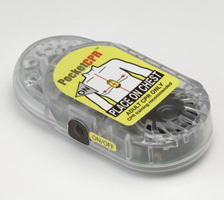
ERTSS is an Authorized Distributor
National Registry of CPR

The National Registry of CardioPulmonary Resuscitation (NRCPR®) is an international database of in-hospital resuscitation events sponsored by the American Heart Association and managed by Digital Innovation, Inc. Initiated in 2000, the NRCPR® is the only national registry of in-hospital resuscitation events, with over 120,000 resuscitation events.
NRCPR Mission
The Mission of the American Heart Association's NRCPR Hospital Safety Program is to reduce disability and death from cardiac and respiratory emergencies by providing an evidence-based, quality improvement program of patient safety, medical emergency team response, effective resuscitation, and post-emergency care.
Visit the website at www.nrcpr.org